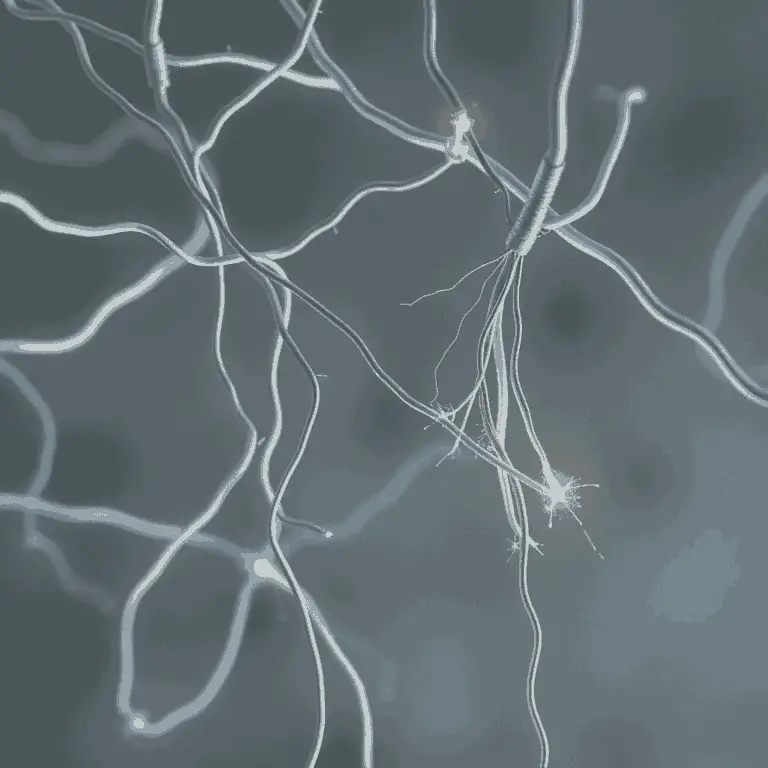
Over the centuries, the concept of body meridians has captivated the attention of healers and scholars alike. They are described as subtle energy pathways through which vital energy, or qi, flows, impacting physical, emotional, and spiritual well-being. She explores how these meridians connect various organs and systems, while they illustrate their dynamic nature influenced by lifestyle and environmental factors. Understanding body meridians opens up new avenues for holistic healing and fosters a deeper awareness of the interrelatedness of mind and body.
Key Takeaways:
- Meridians are energy pathways within the body that facilitate the flow of qi, which is crucial for health and well-being, connecting various organs and functions.
- Practices such as acupuncture, acupressure, qigong, and herbal medicine aim to optimize the flow of qi along these meridian pathways, addressing both physical and emotional imbalances.
- Modern science is investigating the physiological aspects of meridians, highlighting increased electrical activity along these pathways, although their nature and significance remain complex and not fully understood.
Understanding Body Meridians
For those unfamiliar with the concept, meridians can be thought of as intricate channels through which vital energy flows within the body. These pathways, imperative in both Traditional Chinese Medicine (TCM) and holistic health practices, facilitate the movement of qi, nourishing and connecting various organs and systems. The belief is that the balanced flow of this energy is key to maintaining health, whereas any blockages or imbalances can lead to physical and emotional ailments.
Definition of Body Meridians
About meridians, it is significant to note that they are not physical structures like veins or arteries but rather dynamic networks that exist within the body. Each meridian is associated with specific organs and functions, forming an interconnected system that reflects the body’s holistic nature. Understanding these pathways allows practitioners to diagnose and treat a wide array of conditions by addressing not just the symptoms but the underlying energetic imbalances.
Historical Context in Traditional Chinese Medicine
To appreciate the significance of meridians, it is imperative to explore their historical context within Traditional Chinese Medicine. This ancient practice has recognized the interrelationship between the body’s energy systems and overall health for thousands of years. TCM views the body as a dynamic entity, where each meridian corresponds to particular organs and emotional states, creating a comprehensive approach to healing that encompasses the physical, emotional, and spiritual realms.
The origins of meridian theory can be traced back to early Chinese medical texts, where the concept of energy flow and balance was first documented. Over time, this understanding has evolved, integrating observations from various dynasties that shaped TCM’s philosophies and methodologies. The rich history of meridians not only highlights their importance in promoting health but also underscores their role as a bridge between the wisdom of traditional healing practices and contemporary scientific exploration.
The Role of Qi
Some may view qi as an abstract concept; however, it serves as the vital energy that flows through the meridian system, deeply influencing the health and well-being of individuals. This life force is believed to animate the body, guiding not only physical processes but also emotional and spiritual experiences. Healers and practitioners of traditional Chinese medicine emphasize the importance of cultivating this energy to achieve harmony and balance within oneself, advocating for practices that nourish and promote the free flow of qi throughout the body.
Concept of Vital Energy
To understand the essence of qi, one must appreciate its role as the foundation of life energy. It is often described as the invisible force that sustains all living beings, akin to the principles found in various cultures that recognize life energy in different forms. In traditional Chinese philosophy, qi connects the mind, body, and spirit, facilitating not only bodily function but also emotional equilibrium. This interrelation suggests that disturbances in the flow of qi can lead to imbalances that manifest in both physical and psychological ailments, highlighting the necessity of maintaining an unobstructed energy flow.
Importance of Qi Flow for Health
Vital flow of qi within the meridians is vital for maintaining overall health and well-being. When qi circulates freely, it promotes vitality, supports organ function, and contributes to emotional stability. Conversely, blockages or disruptions in this flow can lead to various health issues, including chronic pain, stress, and a weakened immune system. Traditional practices such as acupuncture and qigong aim to restore and harmonize qi flow, thereby facilitating recovery and enhancing life quality. Understanding this relationship underscores the significance of fostering a balanced and vibrant life force throughout the body.
Due to the interconnectedness of qi flow and health, practitioners of traditional Chinese medicine often focus on identifying and addressing any imbalances within the meridian system. They recognize that lifestyle choices, emotional states, and environmental factors can all influence how effectively qi moves through the body. By integrating mindful practices and holistic approaches, individuals may harness the potential of their vital energy to attain optimal health and a deeper understanding of their mind-body connection.
Meridians and Organ Systems
Many practitioners and researchers recognize that meridians serve as vital pathways connecting the various organ systems of the body. In traditional Chinese medicine (TCM), each meridian is intricately tied to specific organs, coordinating their functions and contributing to the overall balance of energy, or qi. This interconnectedness emphasizes that health is not merely the absence of disease but a state of harmony involving the physical, emotional, and spiritual dimensions of being. As practitioners assess the flow of qi through these pathways, they can uncover underlying imbalances that may manifest as physical ailments or emotional disturbances.
Additionally, the dynamic nature of meridians reflects how they adapt and respond to various external and internal influences. Lifestyle factors, such as diet and stress, as well as seasonal changes, can significantly impact the flow of qi along these channels, affecting how well the associated organs function. Through techniques like acupuncture and qigong, practitioners aim to facilitate optimal energy flow, thereby enhancing organ health and promoting overall well-being.
Key Meridians and Associated Organs
One of the fundamental aspects of TCM is the association of specific meridians with corresponding organs. For example, the Liver meridian connects to the liver and gallbladder, playing a significant role in maintaining the smooth flow of emotions and detoxification processes. Similarly, the Lung meridian is tied to respiratory function and the immune system, underscoring its importance in maintaining physical health. Each organ has unique qualities, and disruptions in their corresponding meridians can lead to specific health
challenges, illustrating the profound relationship between energy pathways and organ health.
Moreover, the Kidney meridian is associated with the kidneys and governs aspects such as growth, reproduction, and energy reserves. This illustrates how practitioners utilize knowledge about meridians and their linked organ systems to tailor treatments that address not only physical ailments but also emotional and energetic imbalances in their patients. The understanding of these connections fosters a holistic approach to health, reinforcing the importance of recognizing and treating the body as an interconnected system.
Emotional and Spiritual Connections
Between the body’s meridians and emotional states lies a complex interplay that highlights the significance of energy flow in both physical and psychological health. Each meridian corresponds to specific emotional attributes; for instance, blockages in the Heart meridian may manifest as anxiety or sadness, while stagnation in the Liver meridian can lead to frustration and irritability. This illustrates how emotions are not only psychological experiences but are also deeply embedded in the body’s energy systems.
Indeed, understanding the emotional and spiritual connections associated with meridians allows practitioners to approach healing from a holistic standpoint. This perspective recognizes that restoring balance in the meridian system can facilitate emotional healing, leading to a more integrated sense of well-being. As individuals explore the relationship between their feelings and energy pathways, they may discover profound insights that contribute to personal growth and healing journeys. By addressing both the physical and emotional dimensions, they can cultivate a more comprehensive understanding of their health and vitality.
Dynamic Nature of Meridians
Not all individuals experience the flow of qi through their meridians in the same manner, as various factors can influence this dynamic system. Environmental elements, lifestyle choices, emotional states, and even nutritional habits play significant roles in determining the vitality of meridian pathways. When practitioners assess a patient’s condition, they often consider these influencing factors to better understand the underlying imbalances. A few key factors include:
- Stress levels and emotional health
- Diet and nutritional intake
- Physical activity and exercise
- Geographical and climatic conditions
Any fluctuations in these aspects can result in blockages or disturbances in the flow of qi, leading to a variety of physical, emotional, or spiritual issues. Understanding this interconnectedness emphasizes the importance of a holistic approach to health, where addressing one component can have a ripple effect on overall well-being.
Seasonal and Environmental Impact
With each changing season, the energetic qualities associated with the meridians also shift, affecting how qi flows through the body. Different seasons are linked to specific organs and emotions, and as the environment changes, so too do the needs of an individual’s body. For example, in the spring, the Liver meridian takes prominence, emphasizing the need for renewal and emotional growth. In contrast, winter may focus on the Kidney meridian, encouraging rest and introspection.
Impact on meridians from seasonal and environmental factors can lead to imbalances if not appropriately addressed. A person might find their energy levels fluctuating with the weather, feeling more invigorated during warmer months and more fatigued in colder, darker climates. Moreover, individuals living in urban settings may encounter additional stressors, such as pollution and a fast-paced lifestyle, which can hinder the smooth flow of qi. By acknowledging these seasonal cues and making conscious lifestyle adjustments, they can support their meridian health and overall vitality.
Healing Practices
To understand the impact of meridians on overall health, it is necessary to explore the various healing practices that harness this intricate network of energy pathways. These practices, rooted in traditional wisdom, offer a holistic approach to wellness by aiming to restore balance and harmony within the body. For more insights, individuals can watch this informative video on What are meridians? How do meridians work? By engaging with these modalities, she or he can facilitate the smooth flow of qi, promoting both physical and emotional well-being.
Acupuncture and Acupressure
An necessary component of traditional Chinese medicine, acupuncture involves inserting thin needles into specific points along the meridians to stimulate the flow of qi. This practice is believed to alleviate various ailments ranging from chronic pain to stress-related disorders. Similarly, acupressure, which utilizes manual pressure instead of needles, can be effective in releasing blockages and enhancing energy flow, making it a more accessible option for individuals who may be hesitant about needles.
Qigong and Herbal Medicine
The practice of qigong combines movement, meditation, and breath control to cultivate and balance qi within the body. It emphasizes gentle physical exercises that can improve flexibility and strength while fostering a deep state of relaxation. Herbal medicine complements these practices by utilizing various plant-based remedies to support the body’s natural healing processes. By understanding the connections between meridians and specific herbs, practitioners can tailor treatments to address individual imbalances.
Hence, qigong and herbal medicine can be particularly effective in nurturing both the mind and body, as they promote a comprehensive approach to health. By integrating mindful movement with botanical support, individuals can align themselves with the rhythms of nature and enhance their overall vitality. These practices highlight the dynamism of the meridian system, illustrating how intentional actions can yield profound benefits for one’s physical and emotional landscape.
Scientific Perspectives
Unlike traditional methods that emphasize the philosophical and energetic aspects of meridians, the scientific community is increasingly investigating the physiological dimensions of these pathways. While the existence of meridians as defined in traditional Chinese medicine cannot be directly measured, they represent an intriguing intersection of ancient wisdom and contemporary inquiry. Scientists are working to bridge the gap between these two worlds by examining how meridian pathways may correlate with the body’s biological processes, thus providing a more comprehensive understanding of health and healing.
Research on Meridian Pathways
After many years of skepticism, researchers are now engaging in studies designed to explore the meridian system from a biomedical perspective. This includes imaging studies that have suggested an increased conductivity along meridian pathways, indicating potential channels of electrical activity. Such findings open avenues for further exploration into how these energy pathways may impact various physiological functions, leading to innovative approaches to health and wellness. Additionally, practitioners of traditional healing often report observable benefits when working with meridians, corroborating the need for scientific validation of their effects.
Correlation with Physiological Phenomena
Above and beyond mere anecdote, empirical investigations have begun to reveal striking correlations between meridian pathways and observable physiological events. Researchers have encountered patterns where the activation of certain acupuncture points—often situated along these meridians—corresponds with measurable changes in bodily functions, such as improved circulation and reduced pain response. These observations suggest that the energy flow within meridians may indeed play a role in the body’s overall homeostasis and health.
Also, studies examining the effects of acupuncture alongside advanced imaging techniques show that stimulating specific points along meridian pathways can lead to increased blood flow, altered neural activity, and even modulation of the immune response, further supporting the idea that meridians may have a deeper connection to biological phenomena than previously understood. This ongoing research highlights the potential for integrating ancient concepts with modern scientific approaches to foster holistic health practices.
Final Words
The concept of body meridians serves as a foundational element within traditional Chinese medicine, representing the pathways through which vital energy, or qi, flows throughout the body. These invisible channels are deeply interwoven with the body’s physical, emotional, and spiritual health, influencing various organs and systems. Practitioners understand that disruptions in the flow of qi can lead to imbalances, and they utilize techniques such as acupuncture and herbal medicine to restore harmony and promote overall well-being.
The exploration of body meridians extends into modern scientific inquiry, where researchers seek to uncover the physiological significance of these pathways. Though meridians may not align with conventional anatomical structures, studies suggest that they correlate with electrical activity and other physiological phenomena. As both traditional practices and contemporary science seek to define and integrate the understanding of these energy pathways, they collectively highlight the profound interconnectedness of the human experience and the potential for healing and transformation through comprehension and balance.
FAQ
Q: What are body meridians?
A: Body meridians are energy pathways that facilitate the flow of vital energy, known as qi or chi, throughout the human body. These channels connect various organs and systems, allowing for the intercommunication of energy that sustains physical health, emotional well-being, and spiritual harmony. Unlike physical structures such as veins and nerves, meridians are not directly observable but are recognized in traditional Chinese medicine as important components in maintaining health and balance.
Q: How do meridians influence health?
A: Meridians play a significant role in health by ensuring the smooth circulation of qi. When qi flows freely along these pathways, it nourishes the body’s organs and systems, promoting vitality and well-being. However, blockages or imbalances in the flow of qi can lead to various health issues, including physical ailments and emotional disturbances. Traditional practices such as acupuncture and qigong focus on restoring the flow of qi within the meridians, aiming to resolve imbalances and enhance overall health.
Q: Is there scientific evidence supporting the existence of meridians?
A: While meridians as conceptualized in traditional Chinese medicine do not fit neatly within the framework of Western biomedical science, researchers have begun to investigate their potential physiological underpinnings. Some studies have indicated correlations between meridian pathways and specific physiological functions, showing increased electrical conductivity along these channels. Although direct measurement of meridians remains challenging, emerging research aims to bridge the gap between ancient wisdom and modern scientific understanding, revealing the intricate connections between energy and health.









